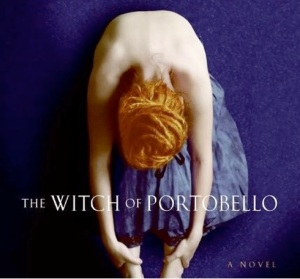Book Reviewed By: Anuradha Malhotra
Publisher: Aether Books
Price: Rs. 295/-
Pages: 160
‘I am Malala’: A book about a simple girl from the terror-stricken Swat Valley of Pakistan, who dared to pen down a blog against the world’s most brutal and hideous terrorist group, Taliban. A girl, all of 11, who refused to bow before an unlawful edict that stated that it is crime for a girl above 13 to attend school. A girl who was shot brutally when she was in her school bus and is currently recovering in the Queen Elizabeth hospital in Birmingham.
About the front cover: A chubby-faced Malala Yousafzai dressed in her school uniform is sitting on a chair, exhuming both poise and intelligence. The cover catches the lovely expression of her face and you already know that she is a confident child that knows what she wants from life!
Titbits about the book: You can read the book in one go, thanks to a total of 160 pages, including the black & white photographs of Malala covering some important events of her life. The text is written in plain English, easy enough for a layman to understand. It is divided into several chapters, with many of them written who were directly or indirectly involved with Malala’s life.
Style: ‘I am Malala’ is not written in a stereotypical style: it’s not a complete autobiography of her. To tell the truth, there are so many things that have been sewn together. You have excerpts from her diary; narrations of the fateful day; view points of important personalities like Gordon Brown, Owais Tohid, Zofeen T. Ebrahim; two heart touching poems; the story of her recovery; her interview and press statement. The style followed in the book is mostly narrative.
Her Take on Taliban and Other Things:
Her angst against the terrorist group is clearly reflected when she says, “Sometimes I imagine I’m going along and the Taliban stop me. I take my sandal and hit them on the face and say what you’re doing is wrong. Education is our right, don’t take it from us. There is this quality in me – I’m ready for all situations. So even if (God let this not happen) they kill me, I’ll first say to them, what you’re doing is wrong.”
At other place, she writes: “How dare the Taliban take away my basic right to education?”
Malala also talks of her dreams, her childhood days, and the beautiful places she has been to. She writes in her diary what she wants to change in the present socio-political system of Pakistan; how the terror has affected thousands of families in her country and how she longs for peace to return in enamouring Swat Valley.
An Eye Opener: The reader comes to know the grave issues that terror-stricken Pakistan has been facing: restriction of women’s space in every sphere, beheadings, slaughters, rape stories, low attendances in school, ban on colourful cloths for girls while going to school, and a lot more. Over 150 schools have been bombed since 2008 and that 67% of women in the country are illiterate, 52% are not enrolled and 62% are out of school!
After you are done reading it, you know all what people from Swat valley have been facing from years and how the attempt on Malala’s life shook the world. How the incident invited the worldwide criticism of the shameful act by Taliban and how the people sitting on prominent positions throughout the world united hands and do colossal efforts to let every child get education.
What More? There is an Interview of Abdul Hai Kakar, the former BBC Urdu service reporter: how he met Malala and what was the impact of her diary in Pak. A few chapters from Gordon Brown, UN special envoy for global education, who did tireless efforts to make the right to education implemented for every girl by 2015. He got the petitions signed by millions of people who supported him in his cause. There is another interview of Malala who talks about her personal life, her take on the things, the fears she has, and what she wants to change.
Her father’s take on the incident: A straight from the heart talk by her father and his thanksgiving to all who supported her daughter and prayed for her recovery.
Then a few pages have been dedicated to the day by day happenings from January to March, 2009.
A separate page is dedicated exclusively to the accolades she has won, including the prestigious nomination for International Children’s Peace prize, in which she stood as the runner up.
What can be a Little Annoying: The information in different chapters is repetitive and sometimes, you feel that you have all the facts on your fingers by the time you are through it.
Why Read It? A brief account of everything related to Malala’s life and the fateful day. Towards the end, you only get inspired from her on how she kept the courage to criticize Taliban in their face, despite being only a child of 11.
Rating: 4.5
You may find the following documentary named ‘Class Dismissed’ by Adam B. Ellick interesting enough to watch:
http://educationenvoy.org/press/new-york-times-class-dismissed
Related articles
- Angelina Jolie Lends Support To Malala Fund (eurasiareview.com)







